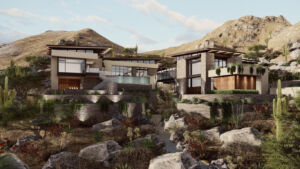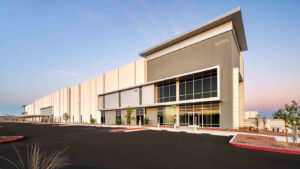The single-family housing market has been on a steep incline over the past couple of years as home price appreciation has skyrocketed. Historically low-interest rates and demand far exceeding supply led to a frenzy of activity from buyers and investors in the past couple of years. However, what goes up must come down. And we are starting to see that now. Increased interest rates and higher monthly mortgage payments are taking the cost of owning a home out of reach for many, and as a result, the rental market is becoming increasingly attractive.
Home prices and interest rates are continuing to rise in tandem, especially in high population growth markets in the Sun Belt region like Phoenix, making it increasingly difficult for first home buyers. According to a recent Redfin study, home buyers in the Sun Belt need 40% more income than they did a year ago, while across the U.S., they need 34% more income.
In Phoenix, buyers must earn $87,026 to afford the metro’s average monthly mortgage payment of $2,176, up 45.7% from a year earlier. Phoenix has a median household income of $67,068 and an average rental rate of $1,667.
READ ALSO: Phoenix ranks No. 2 among hottest housing markets in U.S.
As a result, many renters are choosing to continue to rent, because becoming a first-time buyer is simply out of reach. A recent study by RealPage Inc. found that more than 57% of tenants in market-rate units with an expiring lease chose to renew in the past year compared to 51% between 2010 and 2019. Renters do face significant rent increases, but it is still less costly than the mortgage payments they would have to endure coupled with a down payment.
The majority of these first-time home buyers are a part of the millennial generation. A new report from Apartment List shows millennials are being deterred from home ownership by current market factors. To put this in perspective, the millennial homeownership rate is reported at 48.6% — more than 20% lower than Gen X and 30% lower than Baby Boomers. A staggering 22% of millennial renters say they will never own.
With time, interest rates will help lower home prices and moderate appreciation, but it may take longer for high-demand Sun Belt markets than other U.S. markets. Concentrated efforts by state officials have increased to create more market-rate and affordable inventory to help offset demand. But persisting supply chain constraints, labor shortages, and high costs for materials continue to put pressure on developers.
With so many millennials continuing to rent, the multifamily market remains attractive to investors. Multifamily transaction volume in Q1 2022 outpaced Q1 2021 significantly. However, the Fed’s planned schedule of gradual interest rate hikes has many believing a slowdown in deal flow will emerge in 2022.
Like the rest of the country, inflation continues to be a problem, but it is more severe in Phoenix. Phoenix leads all large cities in inflation at 11% CPI, making it tougher on longtime residents despite being a more affordable area relative to other markets.
Fortunately for investors, Phoenix is a top-tier multifamily market, lending credence that the Valley will not be hit as dramatically as other markets, specifically outside the Sun Belt region. The metro’s extremely favorable factors of continued population growth, low unemployment, wage growth, job growth, and vast talent pool favor this hypothesis.
Combine that with a low supply and high demand for rentals, given Phoenix’s housing market is unattainable by many first home buyers, rents are expected to continue to increase, and occupancy will remain high. In addition, with new companies continuing to target Phoenix for massive new headquarters and factories, more quality jobs and tax revenue are expected. It is fair to assume Phoenix will fare better, even in a possible recession, than most other multifamily markets.
Drew Ricciardi is research manager for ABI Multifamily.




